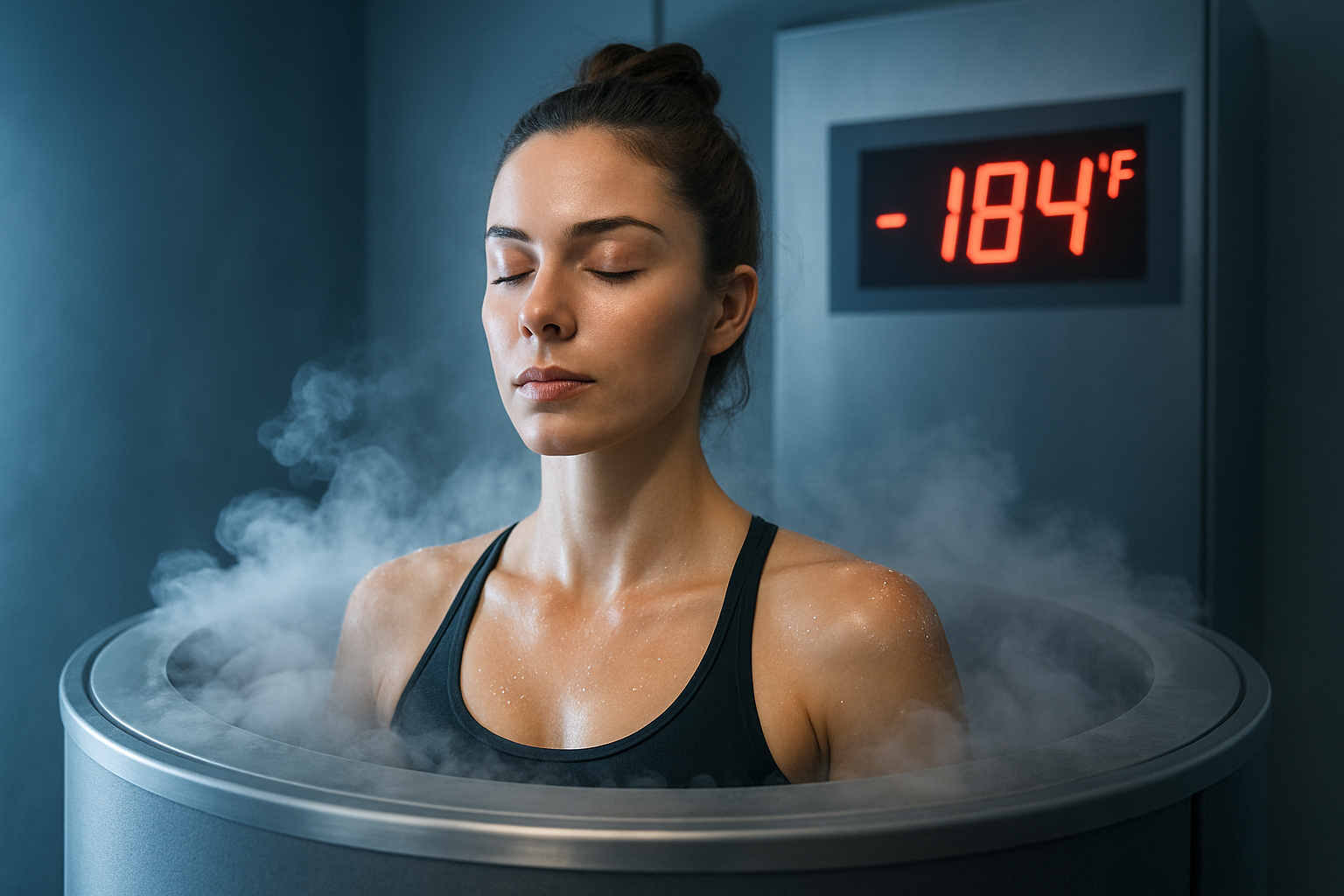Cryotherapy: The Cool New Frontier in Wellness
In the ever-evolving landscape of beauty and fitness, a chilling new trend has emerged, captivating wellness enthusiasts and athletes alike. Cryotherapy, the practice of exposing the body to extremely cold temperatures for therapeutic purposes, has rapidly gained traction as a cutting-edge treatment in recent years. This innovative approach promises a myriad of benefits, from accelerated recovery to enhanced skin health, all within the span of a few frigid minutes. As more spas, gyms, and wellness centers incorporate cryotherapy into their offerings, it's clear that this cool trend is more than just a passing fad. Let's dive into the icy world of cryotherapy and explore its potential to revolutionize our approach to health and wellness.

The concept behind cryotherapy is simple yet powerful: expose the body to extremely low temperatures for a short period, typically two to four minutes, to trigger a physiological response. This response is believed to reduce inflammation, boost circulation, and stimulate the release of endorphins, among other benefits.
The Science Behind the Chill
While the idea of voluntarily subjecting oneself to sub-zero temperatures might seem counterintuitive, there’s growing scientific evidence supporting the benefits of cryotherapy. When exposed to extreme cold, the body’s blood vessels constrict, redirecting blood flow to vital organs. As the body warms up post-treatment, this blood, now enriched with oxygen and nutrients, circulates back through the body, potentially aiding in recovery and reducing inflammation.
Recent studies have shown promising results in various areas. A 2018 review published in the International Journal of Sports Medicine found that cryotherapy could effectively reduce muscle pain and inflammation after exercise. Another study in the Journal of Clinical Medicine reported improvements in sleep quality and reduction in anxiety symptoms among participants who underwent regular cryotherapy sessions.
Cryotherapy in Athletic Performance and Recovery
Professional athletes and fitness enthusiasts have been quick to embrace cryotherapy as a recovery tool. Many sports teams and Olympic training facilities now incorporate cryotherapy chambers into their recovery protocols. The treatment is believed to help reduce muscle soreness, speed up recovery time between workouts, and potentially enhance overall athletic performance.
LeBron James, one of basketball’s biggest stars, has been a vocal advocate for cryotherapy, crediting it with helping him maintain his peak performance well into his 30s. Similarly, soccer superstar Cristiano Ronaldo reportedly has a cryotherapy chamber in his home, using it regularly as part of his fitness regimen.
Beauty Benefits: More Than Skin Deep
Beyond its applications in sports and fitness, cryotherapy has made significant inroads in the beauty industry. Cryofacials, a localized form of cryotherapy applied to the face and neck, have become increasingly popular in high-end spas and dermatology clinics.
The extreme cold is thought to stimulate collagen production, tighten pores, and improve skin tone and texture. Some proponents claim it can help reduce the appearance of fine lines and wrinkles, giving the skin a more youthful appearance. While more research is needed to fully substantiate these claims, anecdotal evidence and early studies have been promising.
The Cryotherapy Experience: What to Expect
For those considering trying cryotherapy, the experience can be both exhilarating and intimidating. A typical whole-body cryotherapy session involves standing in a cryochamber for two to four minutes while temperatures plummet to between -200°F and -300°F (-128°C to -184°C). Participants wear minimal clothing, usually just gloves, socks, and slippers to protect extremities.
Despite the extreme cold, many users report feeling invigorated rather than uncomfortable during the treatment. The short duration of exposure prevents the body from actually freezing, and the dry, gaseous nitrogen used in most cryochambers doesn’t create the same biting sensation as wet cold.
Potential Risks and Controversies
As with any emerging wellness trend, cryotherapy is not without its controversies and potential risks. Critics argue that more long-term studies are needed to fully understand the effects of repeated exposure to extreme cold on the human body. There have been rare cases of frostbite or other cold-related injuries when proper safety protocols weren’t followed.
The U.S. Food and Drug Administration (FDA) has not cleared or approved whole-body cryotherapy devices for medical treatment of any specific medical conditions. This lack of regulation has led to concerns about the safety and efficacy of some cryotherapy facilities.
The Future of Cryotherapy: A Cool Outlook
Despite the controversies, the future of cryotherapy looks promising. As more research is conducted and safety standards are established, it’s likely that cryotherapy will continue to gain acceptance in both the medical and wellness communities.
Innovations in cryotherapy technology are already emerging. Portable cryotherapy devices for at-home use are hitting the market, making the treatment more accessible to a broader audience. Some companies are even exploring ways to combine cryotherapy with other wellness trends, such as meditation or light therapy, to create more holistic experiences.
As our understanding of the body’s response to extreme cold deepens, we may discover new applications for cryotherapy beyond its current use in sports recovery and beauty treatments. From potential mental health benefits to possible applications in pain management, the full potential of cryotherapy is yet to be unlocked.
In conclusion, cryotherapy represents a fascinating intersection of ancient wisdom and cutting-edge technology in the pursuit of wellness. While it’s not a magic solution to all health and beauty concerns, its growing popularity and promising early results suggest that this cool trend is here to stay. As with any new treatment, it’s essential to approach cryotherapy with an open mind, informed skepticism, and a willingness to explore the boundaries of what’s possible in our quest for optimal health and well-being. The future of wellness might just be a little bit cooler than we imagined.





